LIVING SCREENS
The Foraging of Atmospheric Patterns
A new emergent field of research focuses on bio-inspired material systems and computer-aided fabrication processes, allowing designers to experiment with new ways of production and novel design approaches. This debate, linked to a more responsive architecture and nature, highlights a conscious observation of biological processes into distinct and valuable design methodologies for architectural explorations.
This document investigates the design possibilities through the research of the protist organism Physarum Polycephalum, also known as Slime Mould, and proposes an innovative material system for architectural purposes. The named Living Screens project intends to maximize the biological properties of the Slime Mould, engaging a structural bio-machine capable of manifesting and articulating the cognitive relations between the user and the space.
This research is divided in two parts: the first part focuses on the analysis of the natural properties of said organism, and the second part concentrates on the main question being how to apply these properties into an architectural artifact using computer-aided prototyping and the fabrication of the actual structure. The presented research, material tests,- and techniques demonstrate the first successful physical model result of the complex bio-machine capable of altering the interior space perception through the densification of the Physarum Polycephalum’s dynamic patterns.
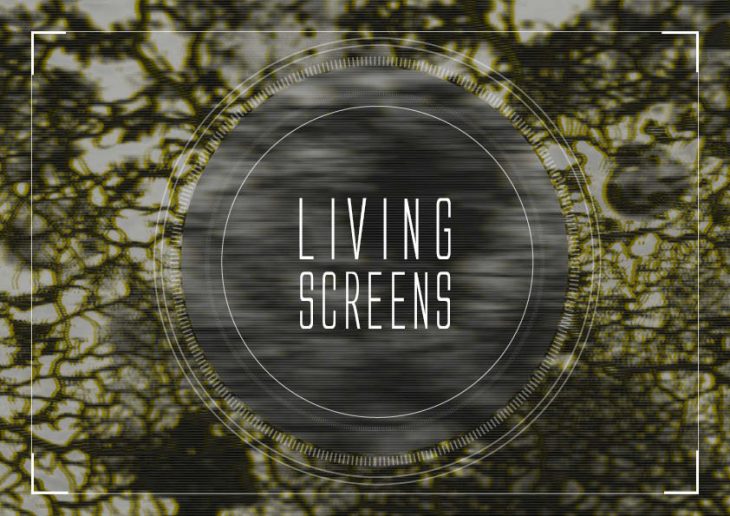
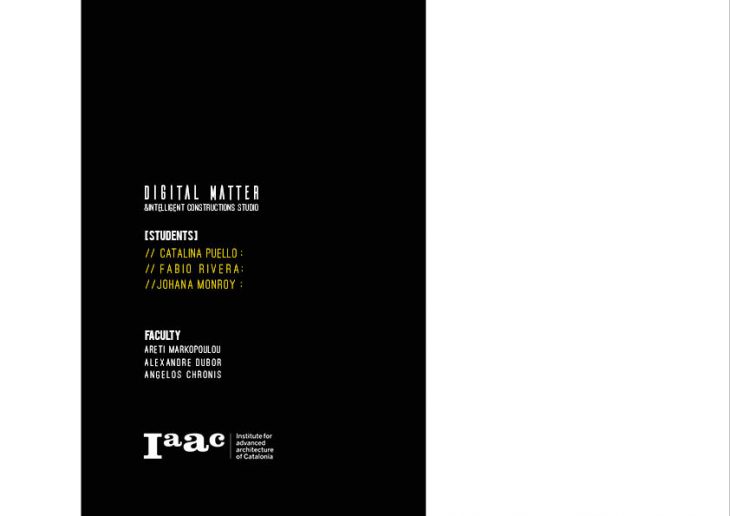
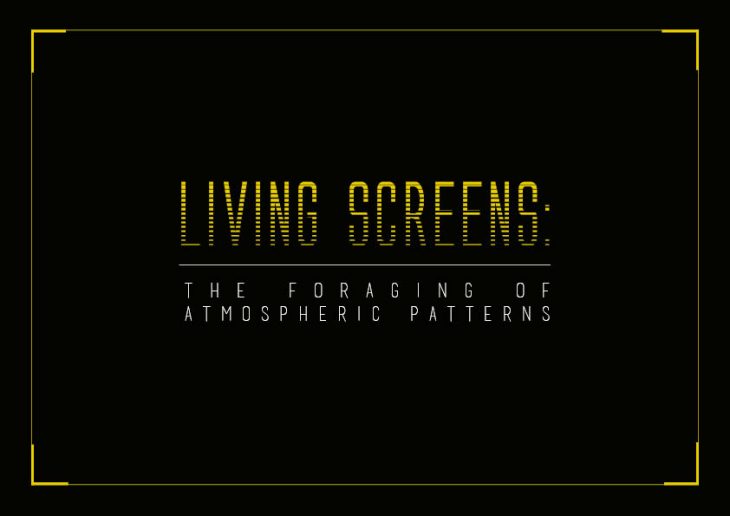
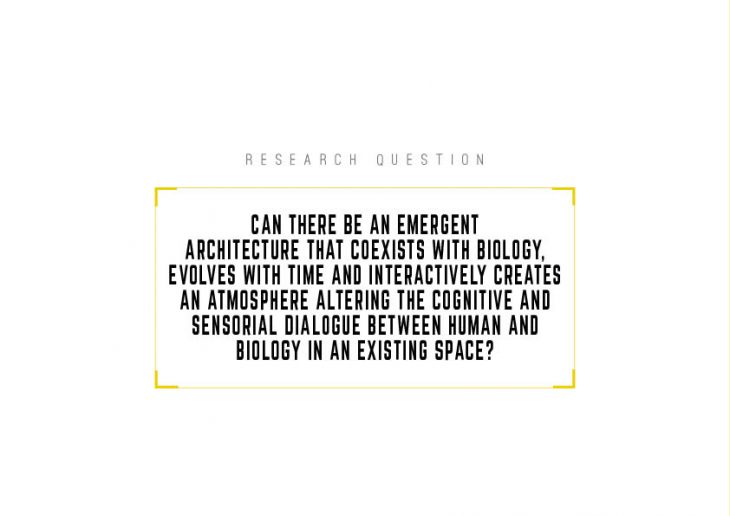
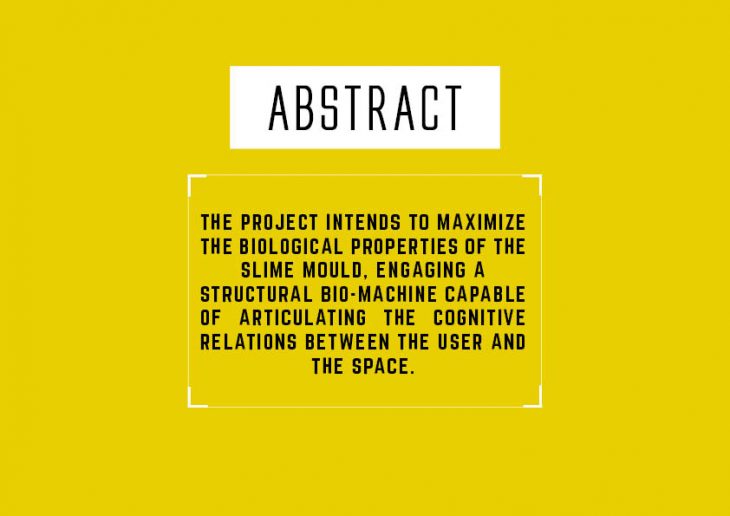
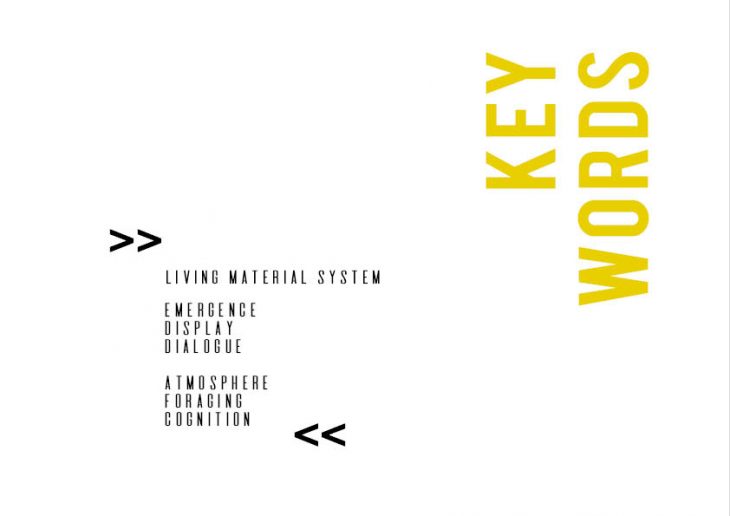
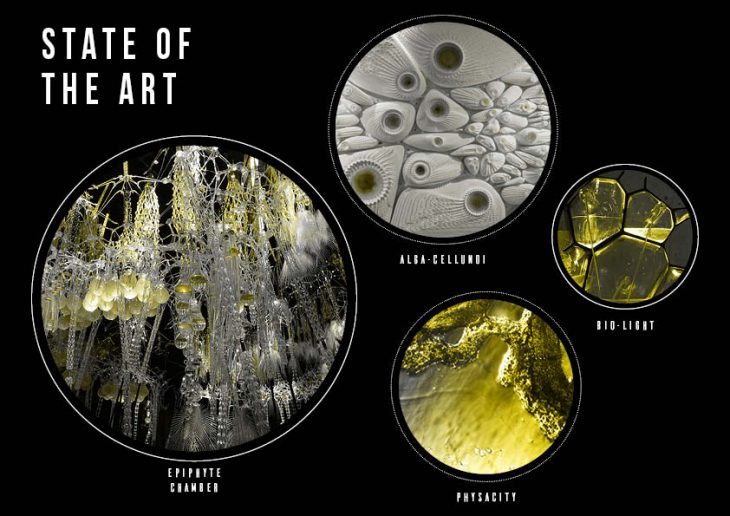
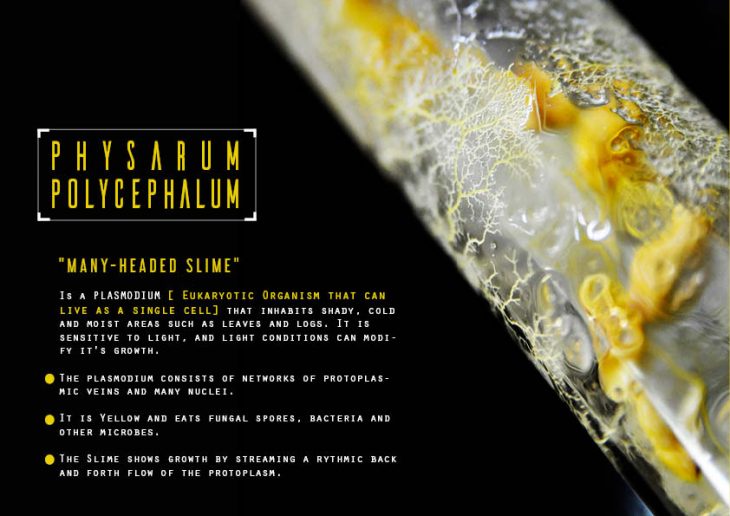
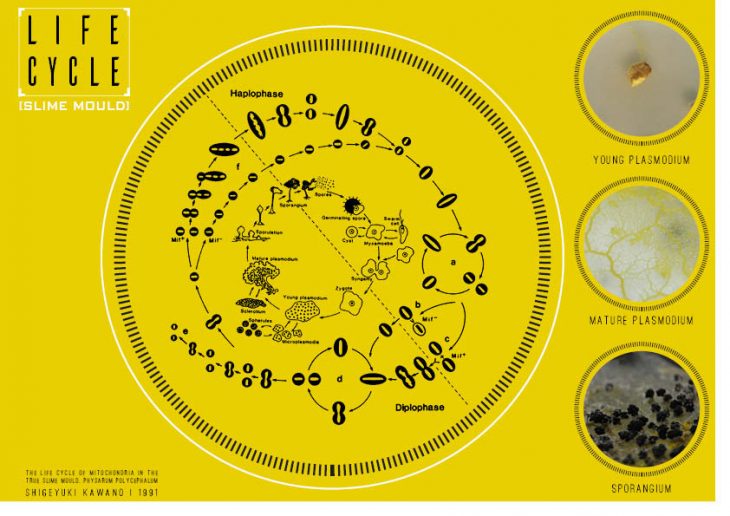
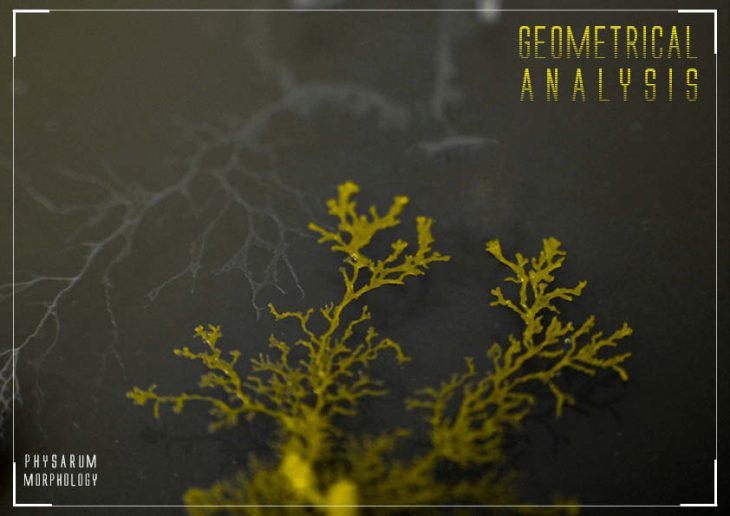
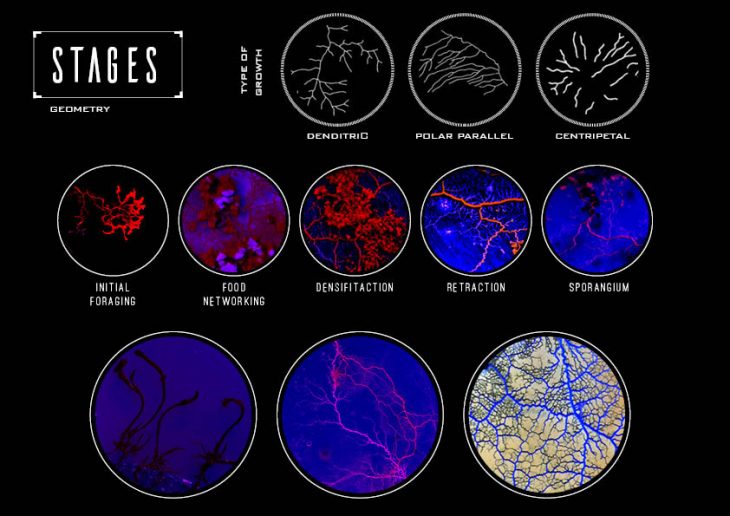
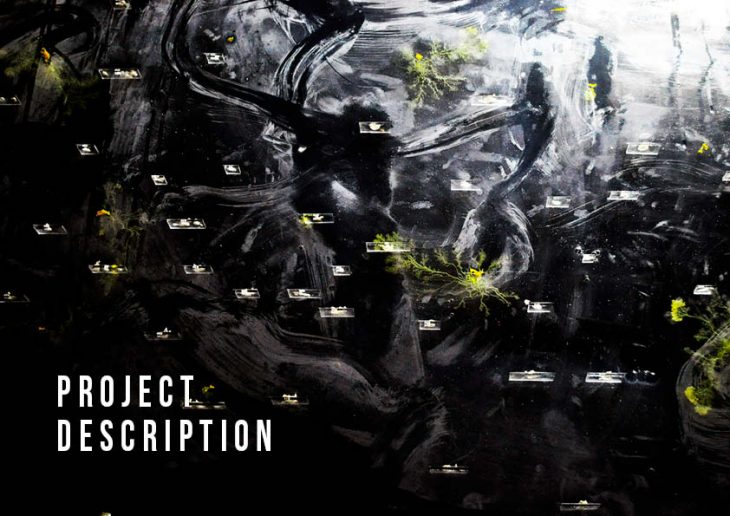
Living Screens is a research project that studies the possibilities of using a living organism, Physarum Polycephalum (Slime Mould), as a panel for interior spaces which is actively responsive and constantly changes according to the users parameters. The material system consist of a series of transparent layers that compose the panel and creates a suitable environment for the Slime mould to grow. The panel is designed to feed the Slime Mould so it densifies its natural patterns working as a living wall that filters light in space. The system engages different elements such as opacity, translucency, transparency, pigmentation and shadows projection.
The Slime Mould’s growth is controlled by the nutrients’ source which comes directly from a food-distributor machine. Said machine deploys the food in specific platforms inside the panel allowing the patterns in each layer to be reciprocal thus having different densities. The panel also includes a humidifier dispenser that controls the levels of humidity inside it. The Slime Mould requires an air-tight environment capable of maintaining the humidity and protecting the organism against outside agents that could alter its development. The result is a dynamic wall that not only changes in time, altering the interior space through color and opacity but also affects the mood and experience of the spectator.
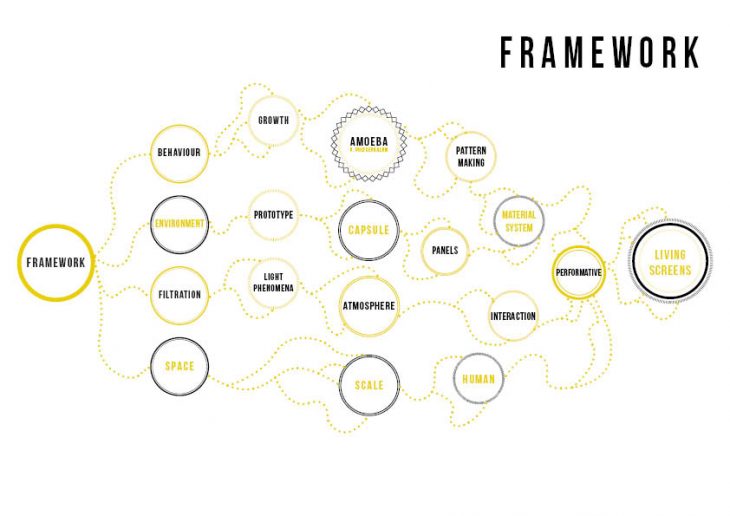
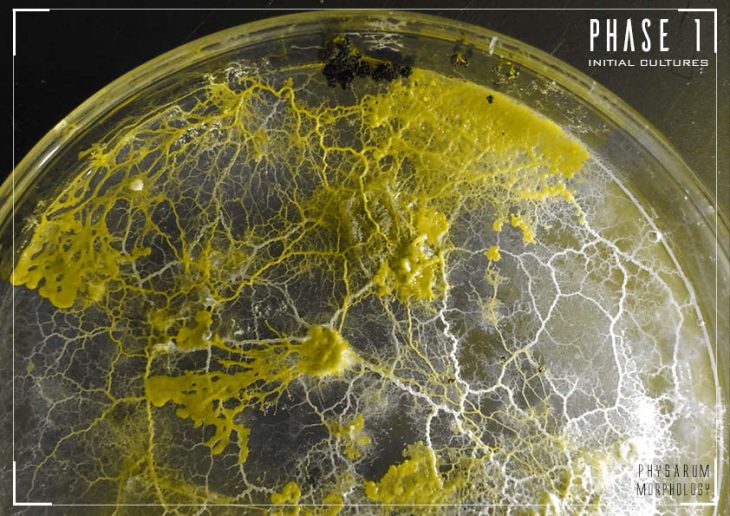
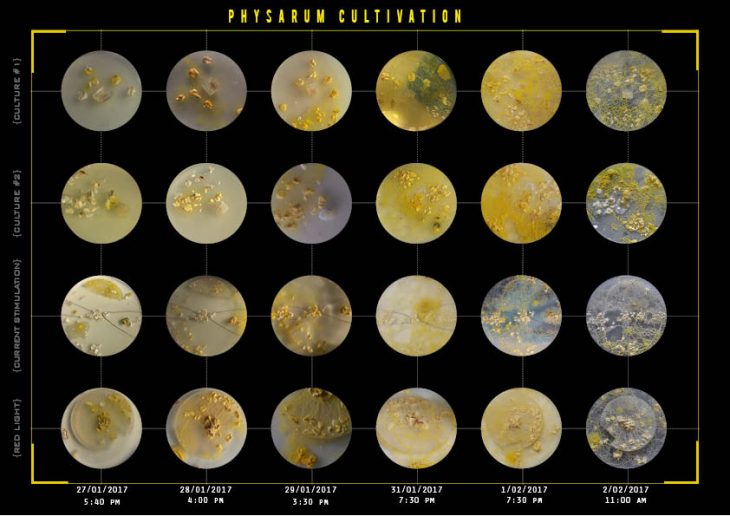
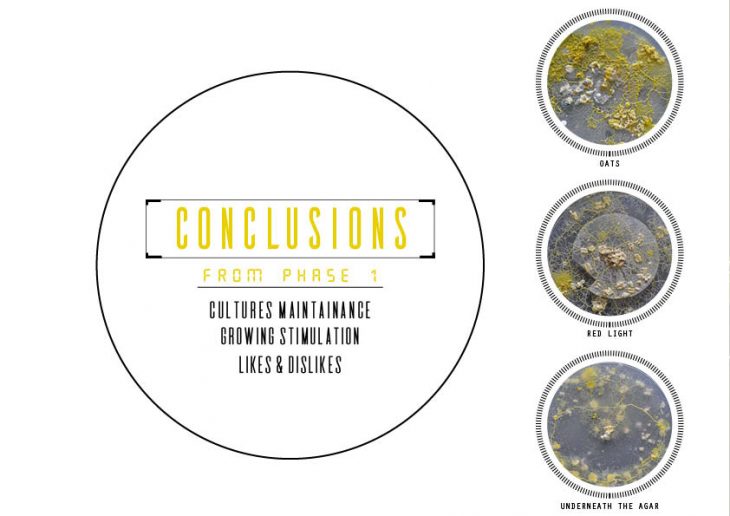
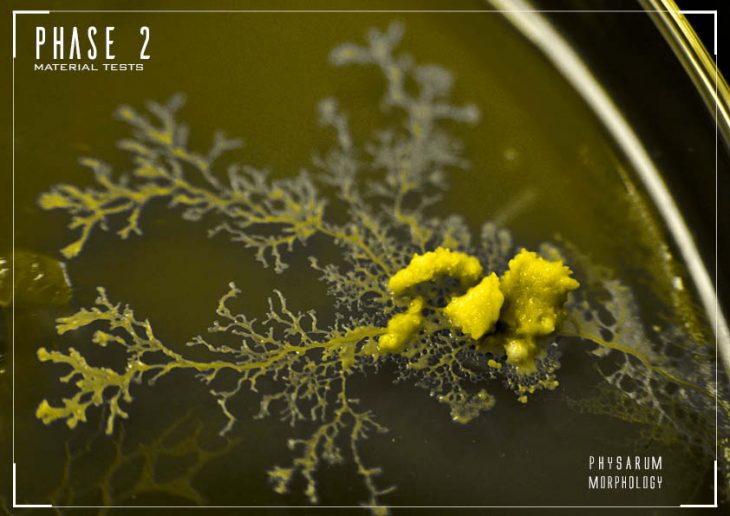
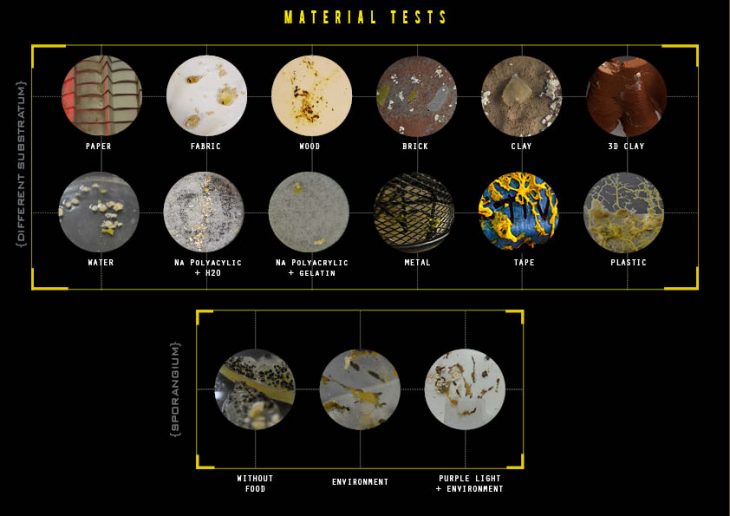
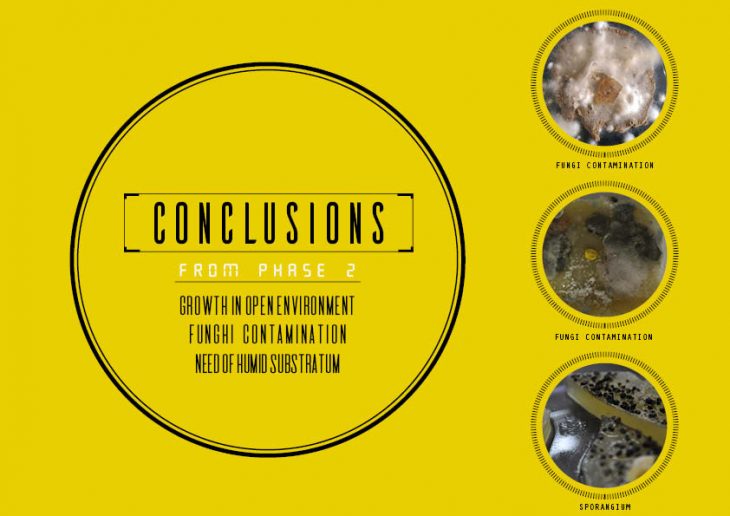
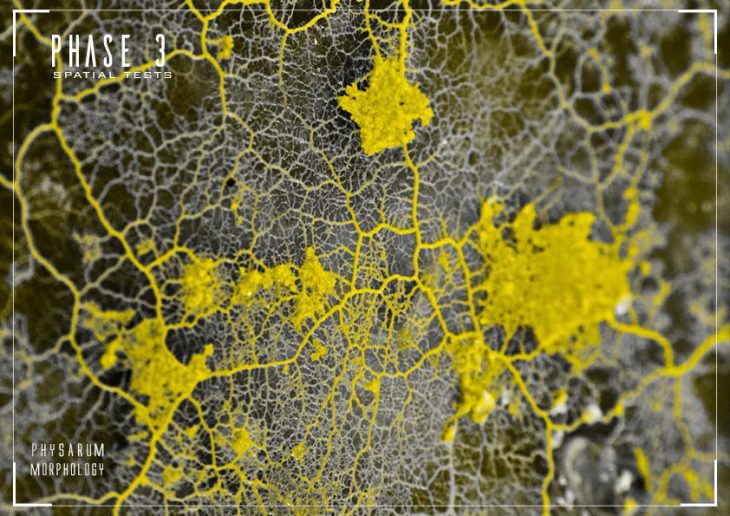
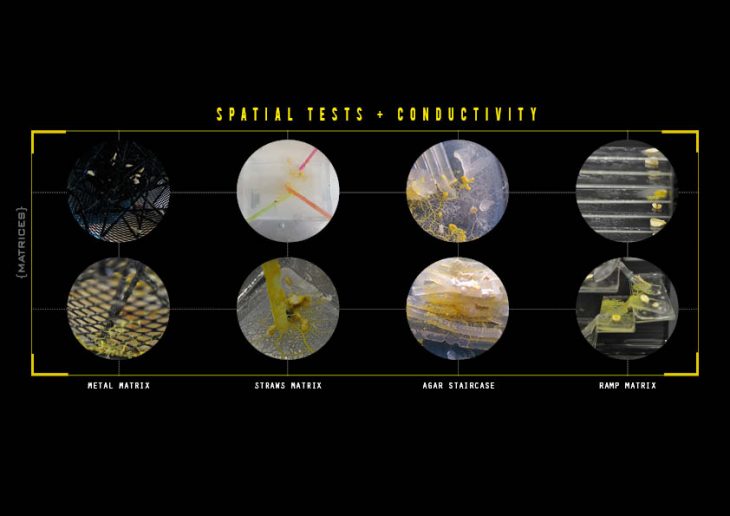

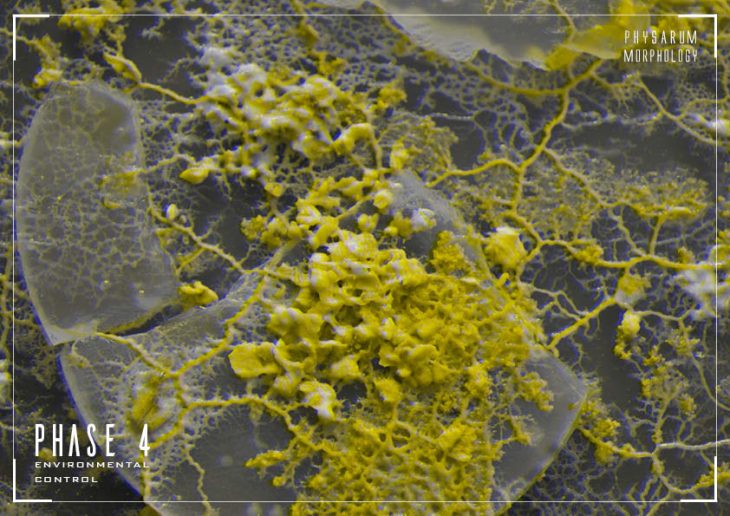
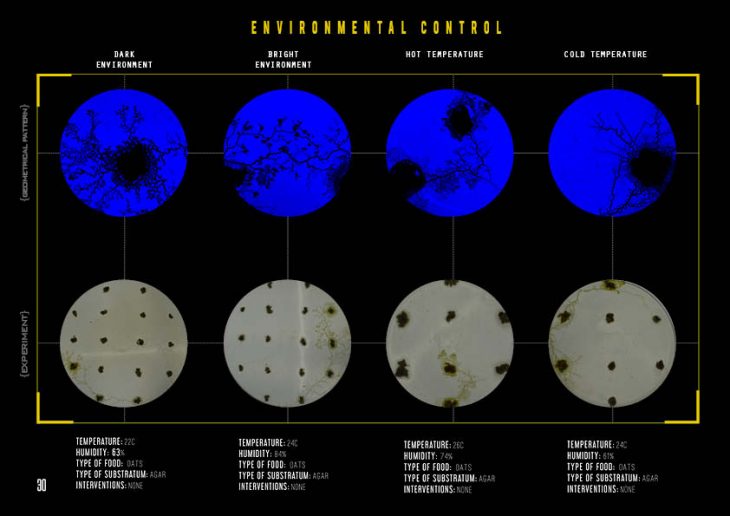
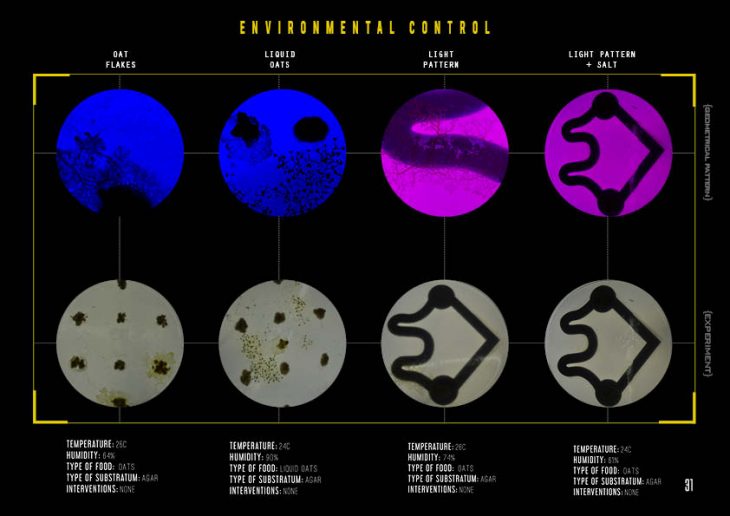
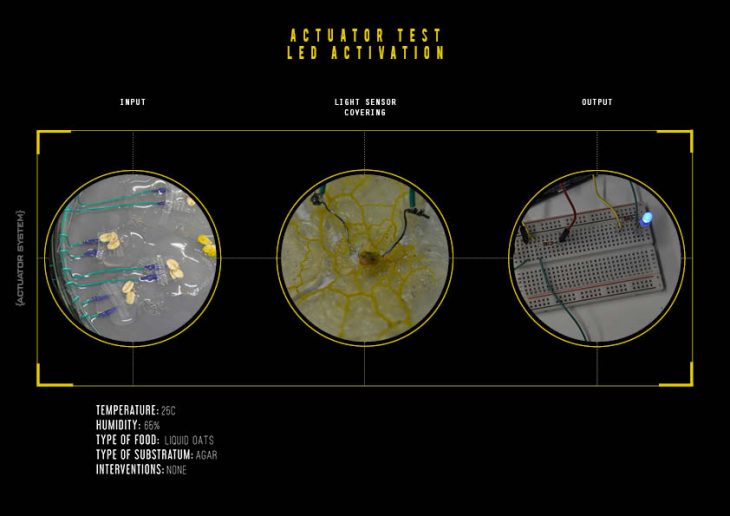
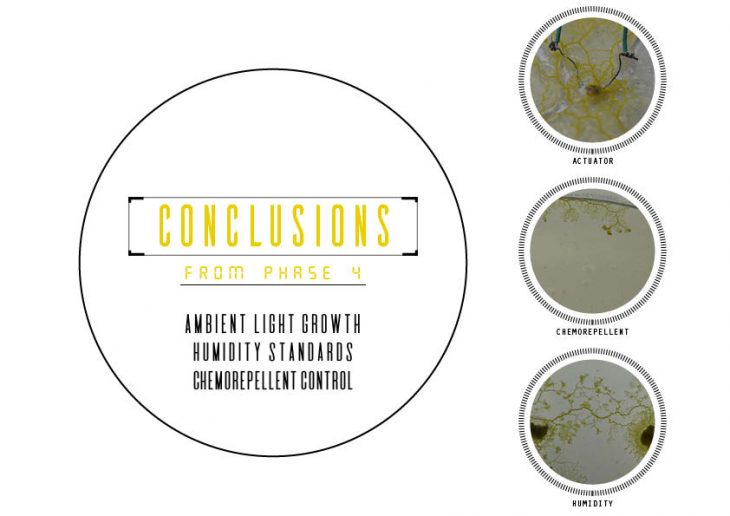
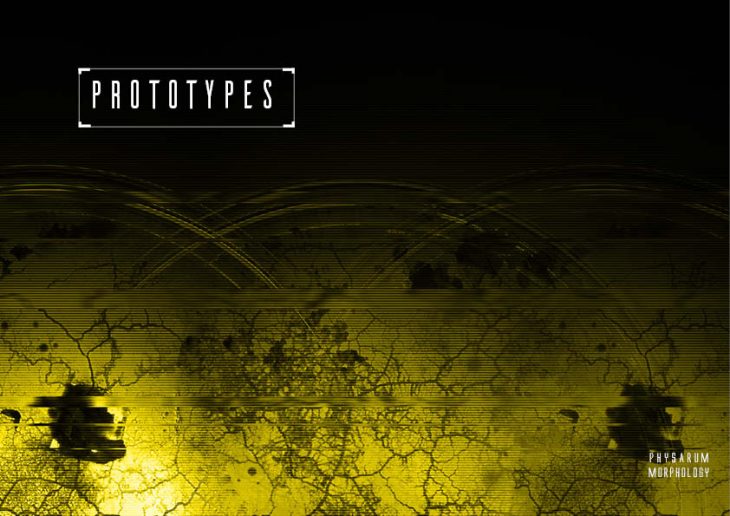
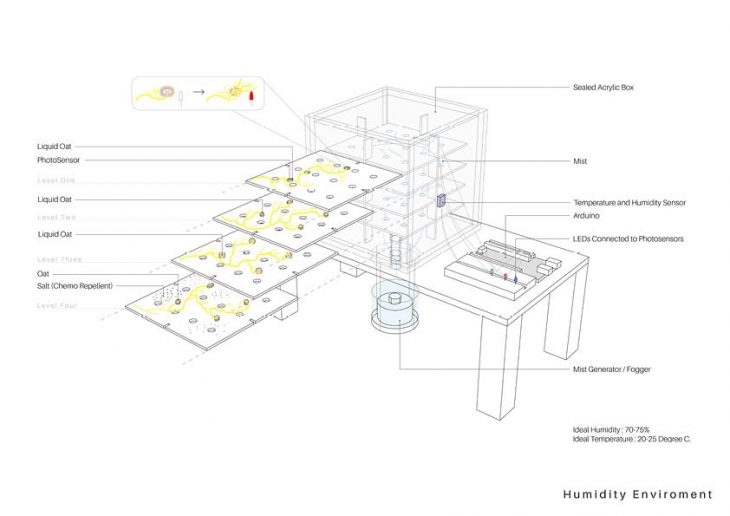
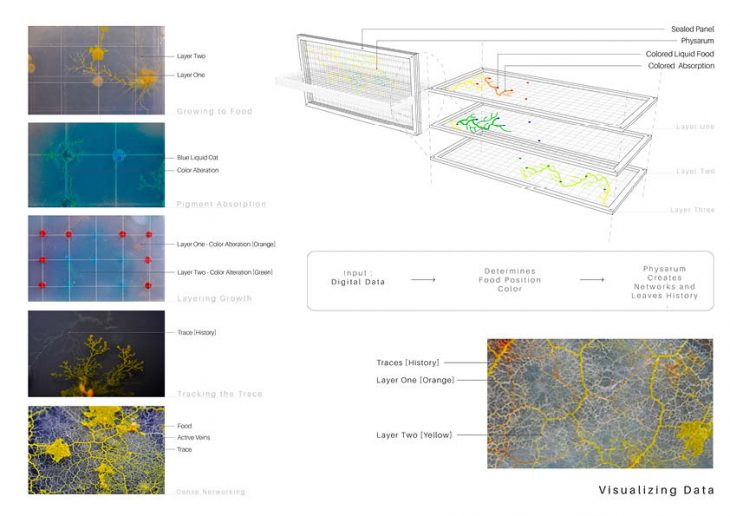
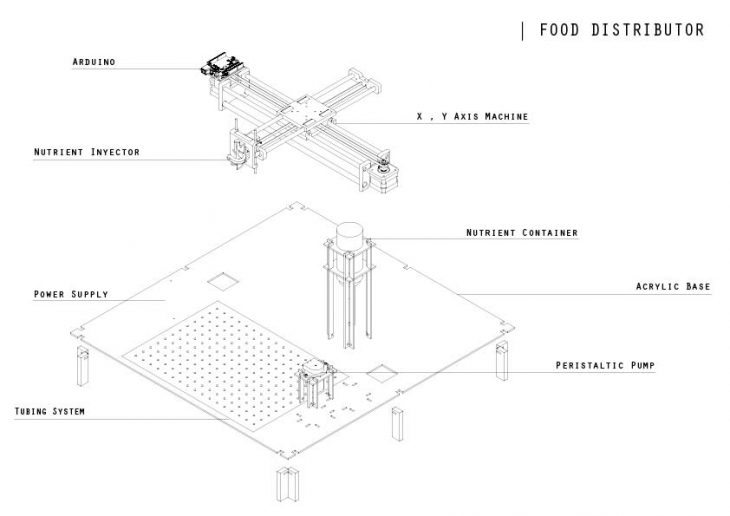
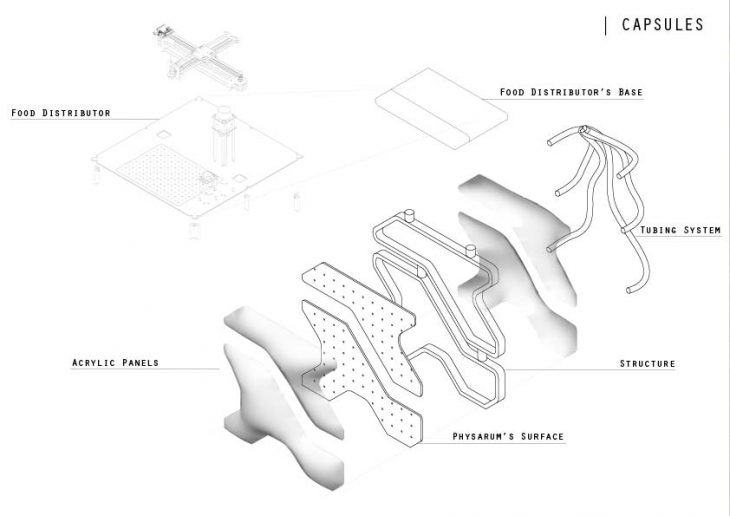
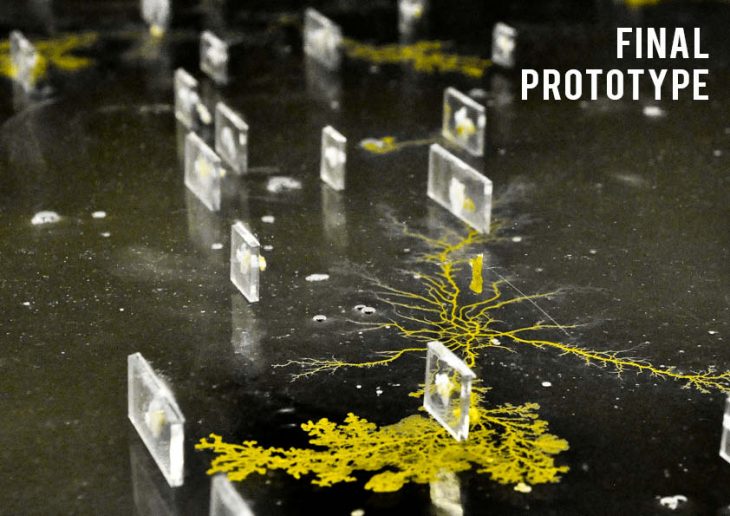
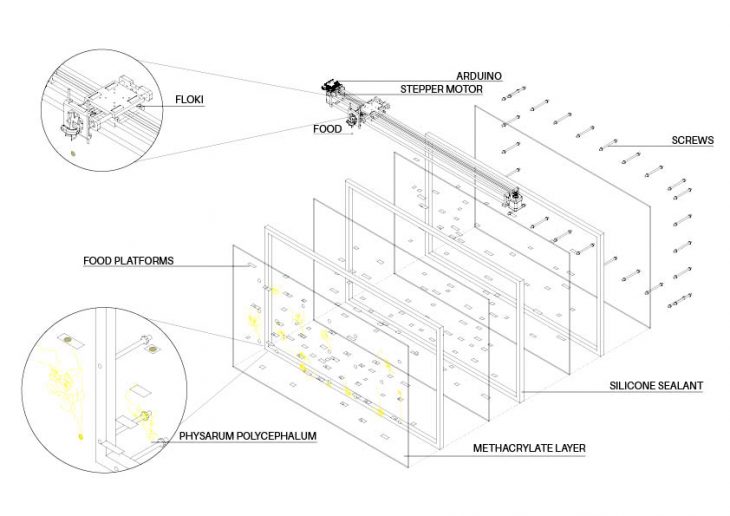
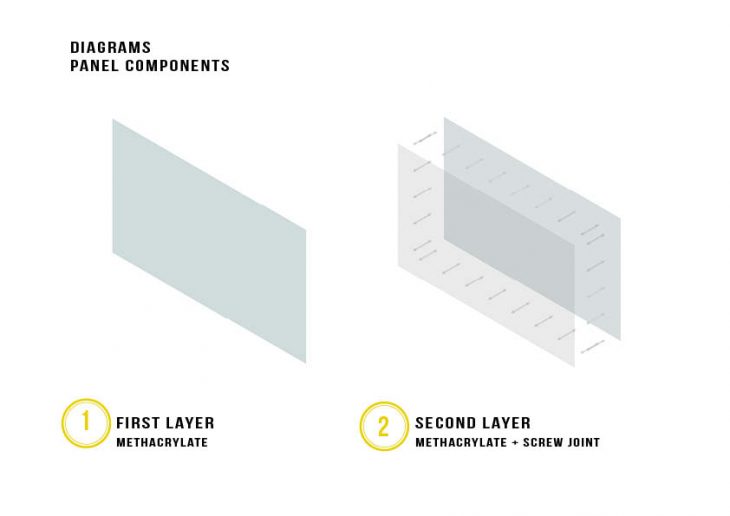
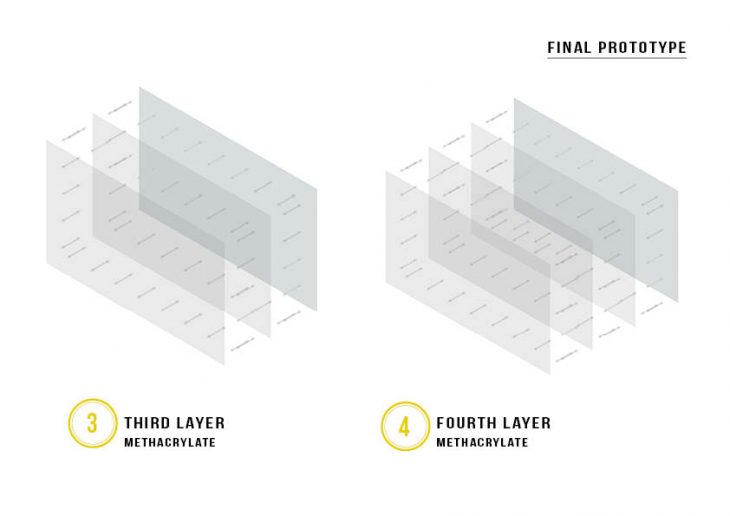
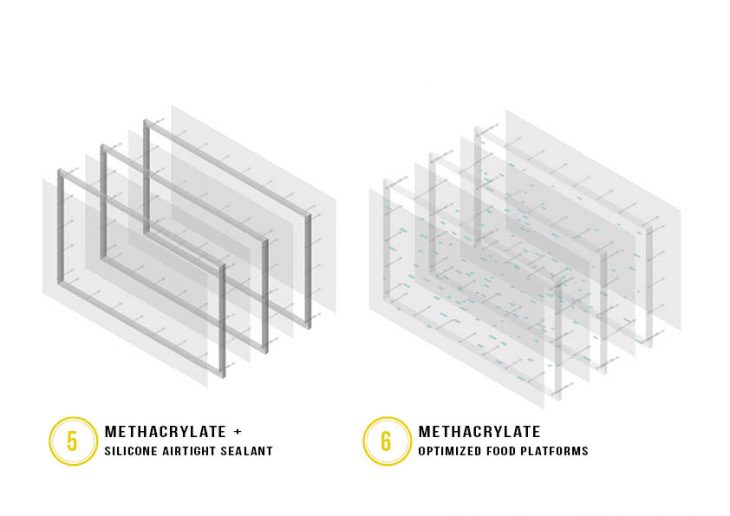
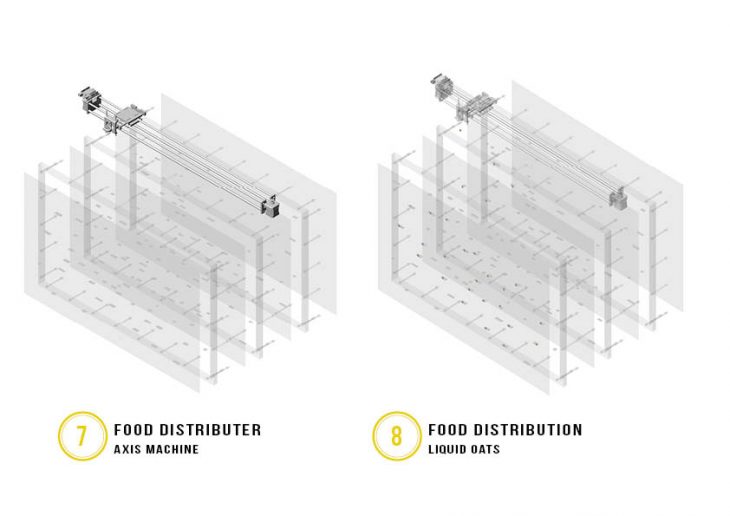
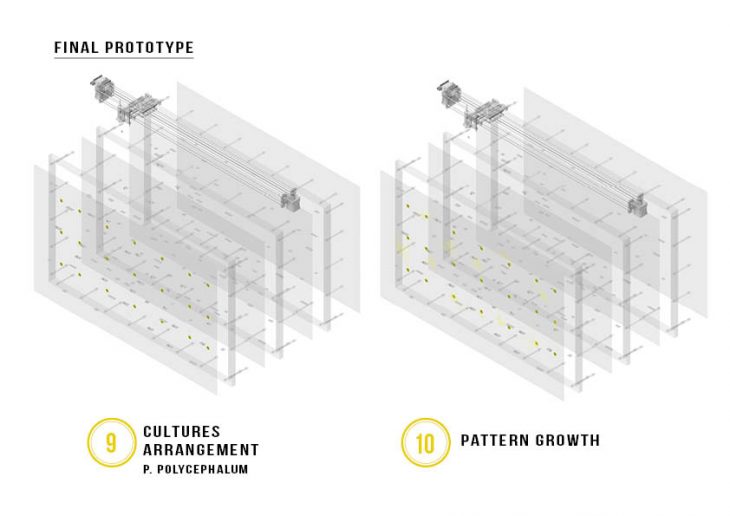
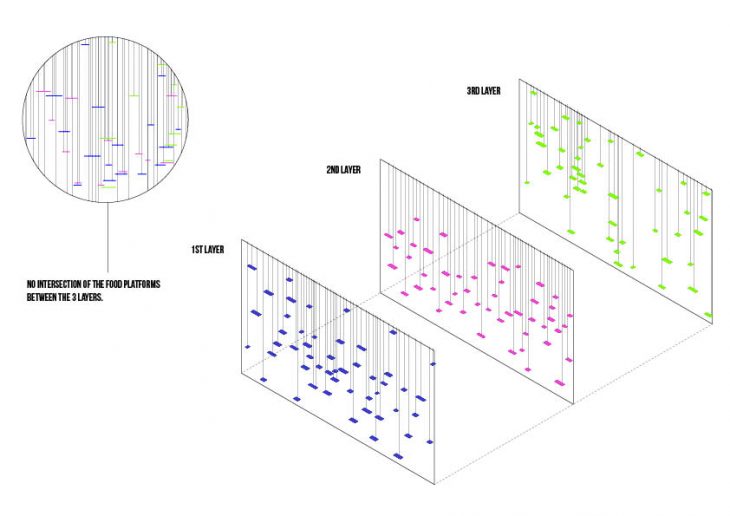

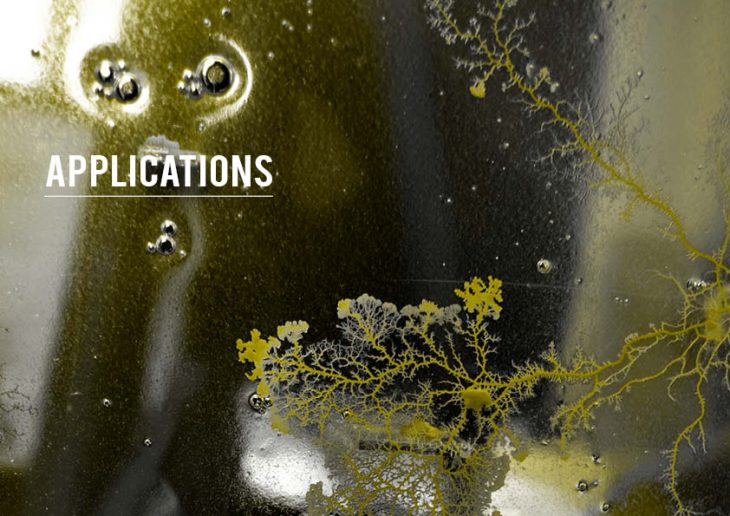
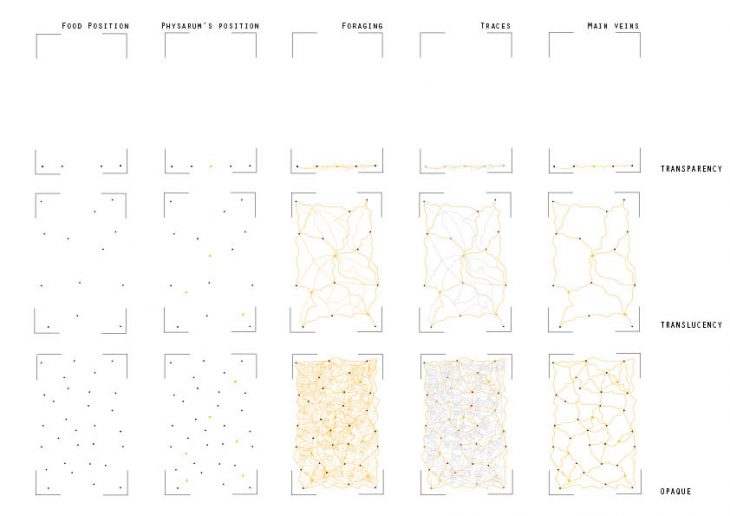
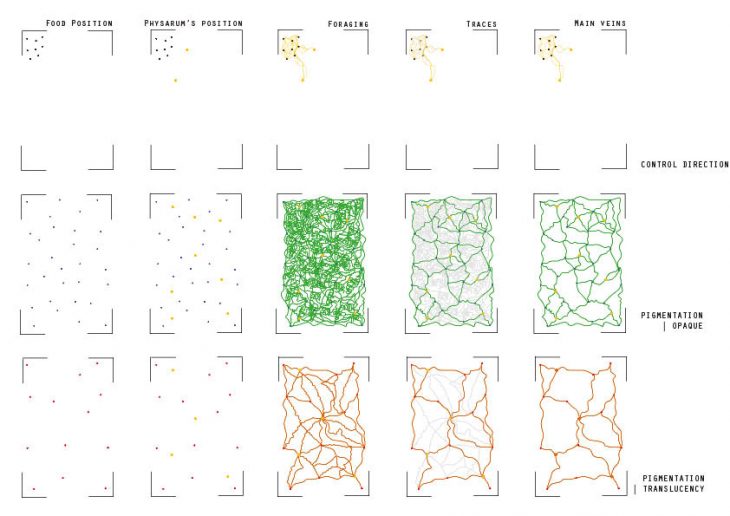
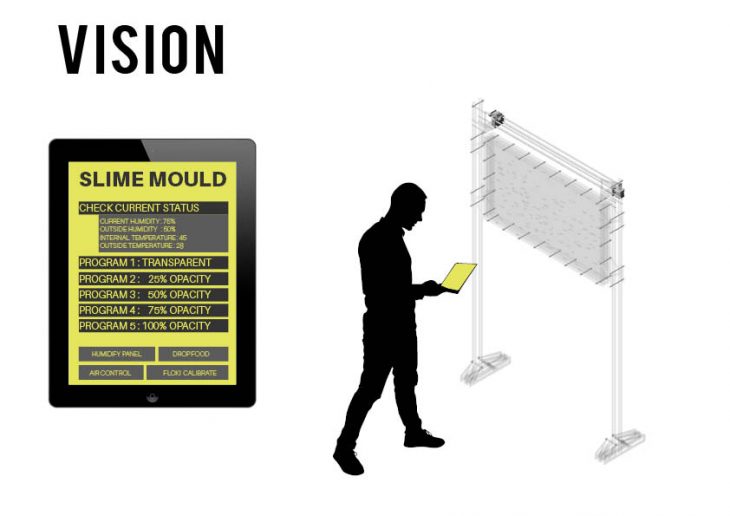
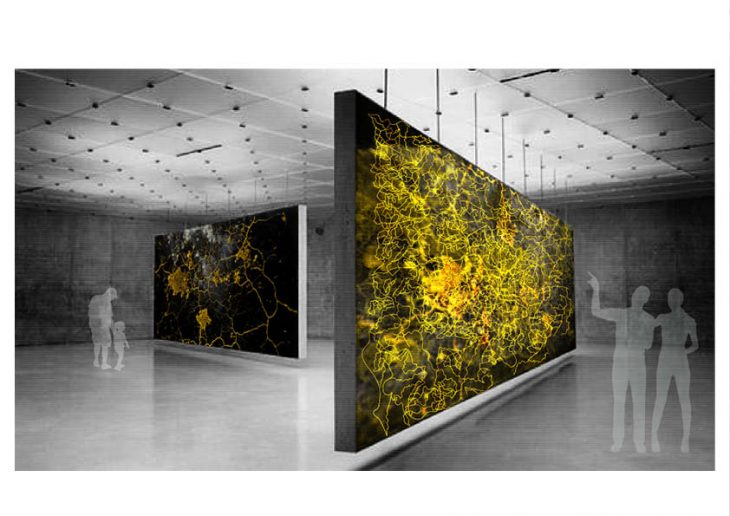
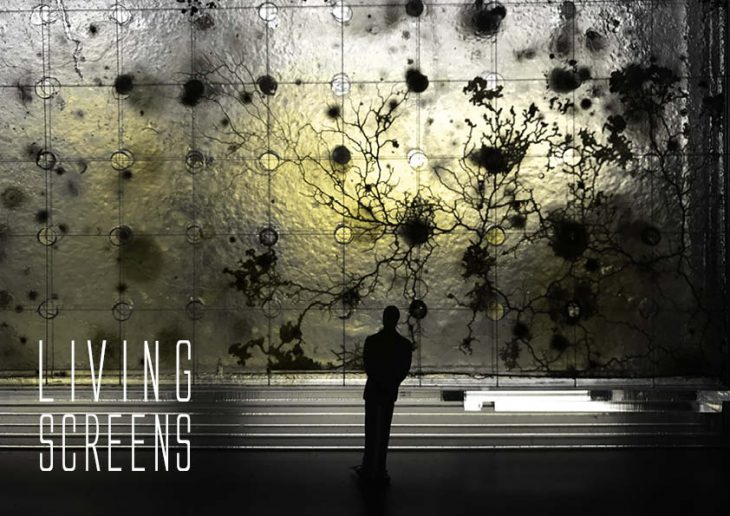
LIVING SCREENS is a project of IaaC, Institute for Advanced Architecture of Catalonia developed at Master in Advanced Architecture in 2016/2017
RS3 – Research Studio 3
DIGITAL MATTER – INTELLIGENT CONSTRUCTIONS
Students: Catalina Puello, Fabio Rivera, Johana Monroy
Senior Faculty: Areti Markopoulou
Fabrication expert: Alexandre Dubor
Computational expert: Angelos Chronis
2017